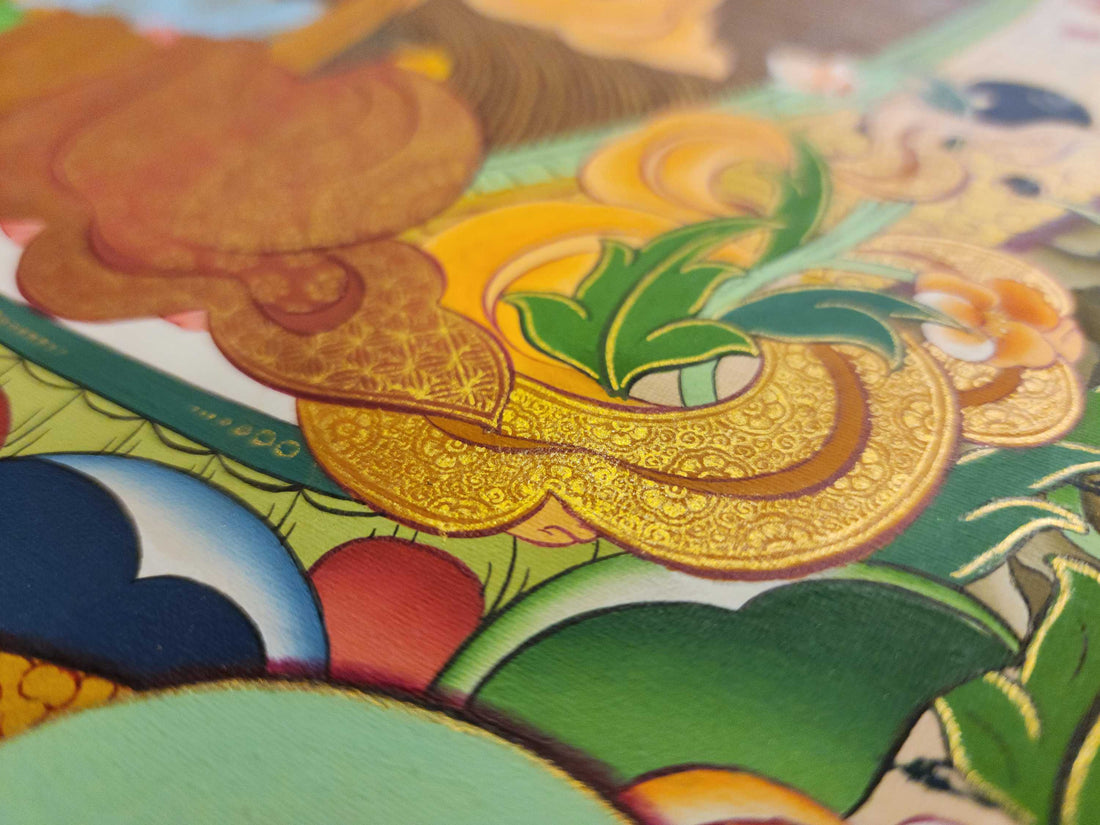
The Symbolism of the Treasure Vase in Thangka Art
Share
Introduction
The Treasure Vase (Kalasha) is one of the Eight Auspicious Symbols in Buddhism. In Thangka art, it represents boundless spiritual and material abundance, prosperity, and the inexhaustible blessings of the Dharma.
Meaning of the Treasure Vase
— Symbolizes endless blessings, wisdom, and longevity.
— Represents the idea that true wealth lies in spiritual knowledge and compassion.
Depiction in Thangka Art
— Usually shown as a round, ornate vase with a short neck and wide base.
— Often adorned with jewels and ribbons flowing from its mouth.
— Sometimes placed among offerings or beside deities symbolizing prosperity.
Spiritual Symbolism
— The Treasure Vase never empties, representing the infinite nature of spiritual wisdom.
— Encourages practitioners to cultivate generosity and gratitude.
— Signifies that enlightenment brings an inexhaustible flow of inner richness.
Use in Rituals and Culture
— Filled with sacred items or grains and used in Tibetan blessing ceremonies.
— Symbolizes the offering of prosperity and peace to all beings.
— Commonly used in temple decorations and household altars for good fortune.
Connection to Deities
— Associated with deities like Dzambhala, the god of wealth, who often holds the vase as a source of prosperity and spiritual richness.
Conclusion
In Thangka art, the Treasure Vase embodies the endless blessings that flow from a generous heart and an awakened mind. It reminds practitioners that true abundance arises from inner peace and compassion.
